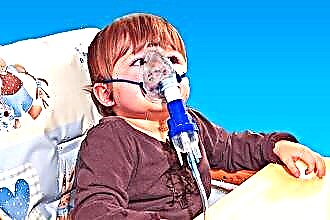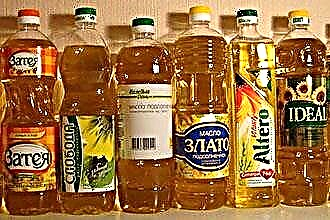Children are very susceptible to hypothermia. Before you have time to look back, the child's snot began to flow. Sometimes it is enough to drink a cold drink for their appearance. Treatment tactics are based on the causes of rhinitis and the symptoms of the disease. A nebulizer for a cold in children is used in combination with other methods of treatment, which makes it possible to enhance the effect of drugs and reduce the risk of adverse reactions.
 The selection of drugs, dosage and duration of admission is carried out taking into account the age of the child and the presence of concomitant pathology. Regularly assessing the dynamics of treatment, the doctor can correct therapy, which is necessary to achieve maximum results.
The selection of drugs, dosage and duration of admission is carried out taking into account the age of the child and the presence of concomitant pathology. Regularly assessing the dynamics of treatment, the doctor can correct therapy, which is necessary to achieve maximum results.
Rhinitis can develop due to:
- frequent colds. When a child's body is weakened by a severe infection or somatic illness, even a small draft can cause a runny nose;
- infection (bacterial, viral). Snot can appear as a result of primary infection or activation of opportunistic microbes;
- exposure to an allergen (pollen, dust, wool, strong odors of perfume, cosmetics);
- prolonged inhalation of dry, polluted air, which irritates the nasal mucosa and stimulates the production of mucus. In this case, mucus is a protective reaction, due to which dust, microbes and allergens are washed off the surface of the mucous membrane;
- dysregulation of vascular tone against the background of diseases of the endocrine, nervous system.
In order to help a child in time, you need to know the first symptoms of the disease:
- nasal congestion (one-, two-sided);
- mucous rhinorrhea;
- sneezing;
- labored breathing;
In children, even a slight swelling of the mucous membrane can lead to a complete cessation of nasal breathing, which is due to the narrow passages of the nose.
- snoring, which aggravates hypoxia;
- restless sleep, which makes the child moody and inattentive;
- dyspeptic disorders (diarrhea, vomiting) - typical for infants;
- subfebrile condition.
With allergic rhinitis, lacrimation, itching of the eyes, nose, conjunctival hyperemia and tissue edema are also observed.
Types of nebulizers
Cold inhalations are used for:
- moisturizing the nasal mucosa;
- restoration of the work of the cilia of the epithelium;
- cleansing the mucous membrane;
- normalization of mucus secretion and drainage function;
- reducing mucosal irritation;
- reducing the severity of edema.
Treatment of a common cold with inhaled medications allows you to achieve good results without affecting the entire body. It is much easier for a child to inhale a cold with a nebulizer than in the usual way. Before starting the procedure, you need to talk to the children, explain the rules for its implementation. For small children, inhalation devices in the form of a toy are specially designed so that they are not afraid of inhalation.

Nebulizers are modern devices for introducing drugs into the respiratory tract in a split form. Distinguish;
- ultrasonic devices. It is characterized by compactness, quiet operation, however, the range of approved drugs is significantly limited;
- compressor (most common). Many medicines can be inhaled with this type of device. It is distinguished by its large size, noisy work, which can scare children.
Today, it is possible to treat a runny nose with a nebulizer not only in a medical institution (clinic, hospital), but at home.
Benefits of nebulizer therapy
Why is the use of a nebulizer recommended for children? Hardware administration of the drug has several advantages:
- steam supply of a certain temperature, which prevents burns of the mucous membrane;
- no need to synchronize breathing with the operation of the device;
 the drug is split into particles of a specified size, which allows you to control the depth of their penetration into the respiratory organs;
the drug is split into particles of a specified size, which allows you to control the depth of their penetration into the respiratory organs;- mild healing effect;
- the possibility of inhalation for infants using a mask;
- the drug remains on the mucous membrane of the nasal cavities, in contrast to nasal drugs, which can penetrate the oropharynx and stomach, negatively affecting the mucous membrane;
- longer therapeutic effect in comparison with nasal sprays;
- fast therapeutic effect (due to the delivery of the drug directly to the inflammatory focus);
- simple inhalation.
Recommendations for the procedure
With what to do inhalation with a nebulizer with a cold to a child? In order to achieve the maximum therapeutic effect, it is necessary to follow some rules:
- first, you need to captivate the child with a game with the participation of the device, so that he does not get scared;
- do not wear tight clothing with a tight collar and chest compression. Breathing should be free;
- the steam temperature should not exceed 40 degrees;
- you need to properly prepare the medicine by diluting it with saline;
- it is necessary to pour a certain amount of the drug into the container and turn on the device;
- a mask should be put on the child's face;
- you need to breathe through the nose, due to which the solutions settle on the nasal mucosa. If nasal breathing is absent, it is recommended to pre-clean the passages, drip vasoconstrictor solutions (Vibrocil, Nazik);
- the duration of the procedure is approximately 8 minutes. It is recommended to do it 2-3 times a day;
- after the end of inhalation, it is necessary to wash your face to cleanse the skin of medicinal particles;
- the mask should be rinsed with running water.
Before starting inhalation treatment, it is imperative to consult a doctor.
For a nebulizer with a cold, oil, herbal solutions are prohibited. After the procedure, it is not recommended to run, go out into the cold, drink water for half an hour.
If the hyperthermia exceeds 37.4 degrees, inhalation is not performed.
Nebulizer medicines
 Now let's look at what to do inhalations with a cold. Inhalation with saline solution and mineral alkaline water are considered the safest. Please note that only non-carbonated water is used (Borjomi, Luzhanskaya, Essentuki). Such procedures make it possible to reduce the viscosity of mucus and prevent its accumulation. In addition, dry crusts become softer, making them easier to remove from the nose.
Now let's look at what to do inhalations with a cold. Inhalation with saline solution and mineral alkaline water are considered the safest. Please note that only non-carbonated water is used (Borjomi, Luzhanskaya, Essentuki). Such procedures make it possible to reduce the viscosity of mucus and prevent its accumulation. In addition, dry crusts become softer, making them easier to remove from the nose.
Inhalation with saline solution for the common cold can be carried out 4 times a day, not only for treatment, but prevention (with low humidity in the children's room). The procedure makes it possible to prevent drying out of the mucous membrane, its trauma and infection through damaged tissues.
With the help of a compressor apparatus, you can inhale rosehip oil, eucalyptus, but only after the permission of the doctor. Such procedures are prescribed for atrophic rhinitis, but are extremely rare in childhood. This is due to the high risk of adhesion of the alveoli if the rules for the procedure are not followed.
What medications can be inhaled with the device? Prescriptions for colds in children, used for inhalation with a nebulizer.
| Drugs | Indication | Application features |
|---|---|---|
| Hormonal agents (Pulmicort) | Prescribed for emergency treatment with the development of allergic rhinitis. They are recommended for asthma attacks or bronchial asthma. For inhalation, a compressor device is needed, because in an ultrasound, the hormonal drug is destroyed. | The medicine is diluted with saline. It comes in a 2 ml (0.5 mg) container.Children are allowed a maximum of 0.5 mg per day, however, under medical supervision, the dose can be increased to 1 mg. |
| Herbal remedies (Tonsilgon N, Rotokan, Sinupret) | To reduce inflammation, sanitize the cavity from microbes, strengthen immunity | Tonsilgon N is divorced 1: 3 (infants), 1: 2 - up to the age of seven. Rotokan is diluted 1:40. Sinupret is used from the age of two, it is diluted 4 times (up to six years), three times - up to 16 years |
| Disinfectant solutions (Miramistin, Dioxidin, Furacilin) | For the death of pathogenic microorganisms, reduce inflammation | Dioxidine is inhaled in the form of a 0.25% solution, diluted three or five times (depending on the concentration of the purchased drug). Furacilin does not require dilution, since the finished drug can be purchased at the pharmacy |
| Mucolytic medicines (Fluimucil) | To reduce the viscosity of mucus | Diluted four times (for 6-12 years old) or five times (for 2-6 years old) |
| Immunostimulating agents (Interferon) | To boost immune defenses | Diluted twice. Appointed from the age of two. |
To find out how to treat rhinitis in a child, you need to consult with a specialist. The doctor selects the most effective recipes for children with a cold, which can be used for inhalation with a nebulizer. Note that medications can cause allergic reactions, therefore, treatment in childhood should be carried out under medical supervision.
You should not be frivolous about the common cold, because children are more prone to developing complications than adults. Self-treatment of a child is fraught with serious consequences, including death, against the background of severe intoxication and severe hypoxia.

 the drug is split into particles of a specified size, which allows you to control the depth of their penetration into the respiratory organs;
the drug is split into particles of a specified size, which allows you to control the depth of their penetration into the respiratory organs;

